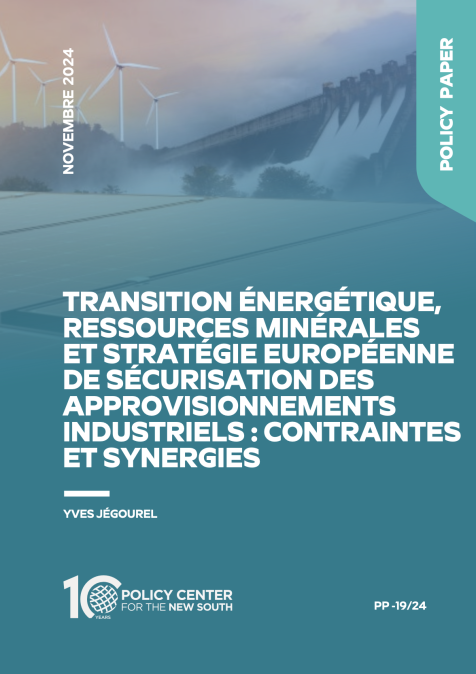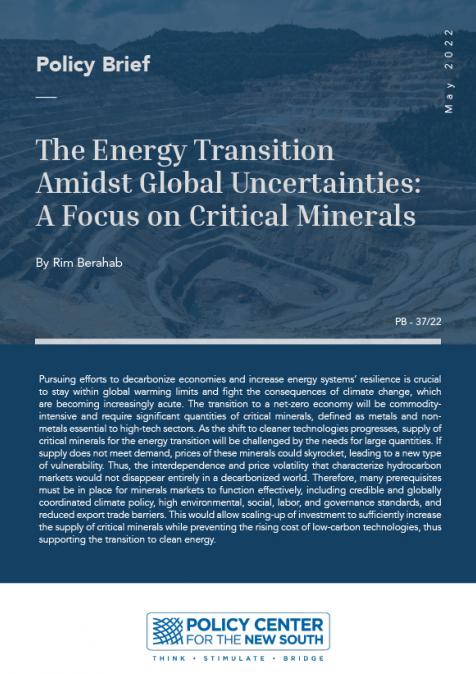Publications /
Policy Paper
Si la réalité même de la transition énergétique est parfois questionnée, voire remise en cause (Fressoz, 2023), l’effet de report qu’elle crée sur les ressources minérales, mis en évidence par de nombreuses études prospectives, apparaît indiscutable. Plus de cuivre, de lithium, de nickel, de graphite ou de terres rares : telles sont les conditions non exhaustives permettant de soutenir le développement de l’électromobilité et des énergies renouvelables et, ainsi, de contribuer à la limitation du réchauffement climatique, conformément aux engagements pris lors des accords de Paris sur le climat de 2015. Au-delà des évidences, ce nouveau paradigme pose intrinsèquement la question de la définition et de l’optimalité des politiques publiques et privées permettant, d’une part, une plus grande valorisation du sous-sol et le développement industriel des pays producteurs et, d’autre part, de réduire des contraintes d’approvisionnement et la dépendance stratégique des nations importatrices. Il interroge également, plus fondamentalement encore, sur la volonté, voire la capacité, des nations à s’affranchir des stratégies bilatérales pour engager des négociations internationales sur ces ressources, parallèlement à celles menées sur le climat.








